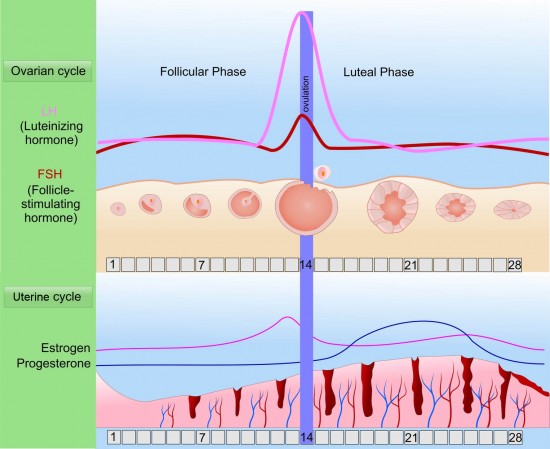
What is a Luteal Phase Defect or LPD?
What is the Luteal Phase?
The luteal phase is the second part of the menstrual cycle and it is the time after ovulation until your period starts. In ideal circumstances, the luteal phase is about 14 days long but can run from 10 to 17 days long.
During the luteal phase, the production of estrogen and progesterone increase. This increase helps prepare the uterine lining for the implantation of the fertilized egg. If there is no fertilization, the uterine line sheds, and your period starts.
What is a Luteal Phase Defect?
If the number of days between ovulation and your period starting is 10 days or less, doctors classify this as a luteal phase defect. Some doctors consider a luteal phase of 12 days problematic as well.
If your uterus does not have the full 14 days to build up it's lining and utilize the extra progesterone and estrogen, your endometrial lining will not be able to sustain a pregnancy.
There is the possibility that the embryo will not be able to attach itself to the lining at all but, if it is able to attach, the chances of an early miscarriage are great.
Causes of Luteal Phase Defect
A major cause of luteal phase defect is low progesterone. This can be caused by poor follicle production in your ovaries. If your eggs are not developing as they should for ovulation, the related hormones, including progesterone, will be at lower than optimal levels.
Failure of the corpus luteum to last as long as it should after ovulation can contribute to lower progesterone levels. The corpus luteum is the hormone-producing sac that is left, in the ovary, after the follicle has released the egg into the fallopian tubes at ovulation.
If the corpus luteum fails to last as long as it should, the progesterone will stop being produced and a luteal phase defect may occur. Poly Cystic Ovarian Syndrome (PCOS) can contribute to lower levels of progesterone in your system as well which can lead to a luteal phase defect if ovulation does actually occur.
Treatments for Luteal Phase Defect
Progesterone, in the form of injections, pills, suppositories or cream can be used after ovulation until pregnancy is confirmed or your period arrives. Your doctor may advise you to continue using the progesterone into the first trimester to help keep your progesterone levels where they need to be to be.
Vitamin B6 has been shown to help increase your levels of progesterone naturally. 100 to 200 mg of vitamin B6 is typically the amount which doctors suggest to increase your progesterone levels. You can increase your b6 intake with the foods you eat or with supplements.
Vitamin C has also been shown to help increase your luteal phase. A study published in Fertility and Sterility (2003;80:459–61) shows that increasing your Vitamin C intake per day to 750mg can lengthen your luteal phase and increase overall fertility and pregnancy rates over time.
Vitex (Chaste Berry) is an herb that has overall fertility enhancing benefits. It helps the body produce more luteinizing hormone, which causes ovulation to occur and more progesterone produced. Vitex also supports the formation of the corpus luteum which is responsible for the correct hormone balances to sustain a pregnancy.
Tags:
Health Issues
Quick links
Search
Contact Us
Shipping Information
Helpful Info
Terms of Service
Privacy Policy
Do not sell my personal information
Contact us
About us
BabyHopes.com is a family owned and operated business, opened in January 2001. We have been serving the trying to conceive community for over 20 years.
